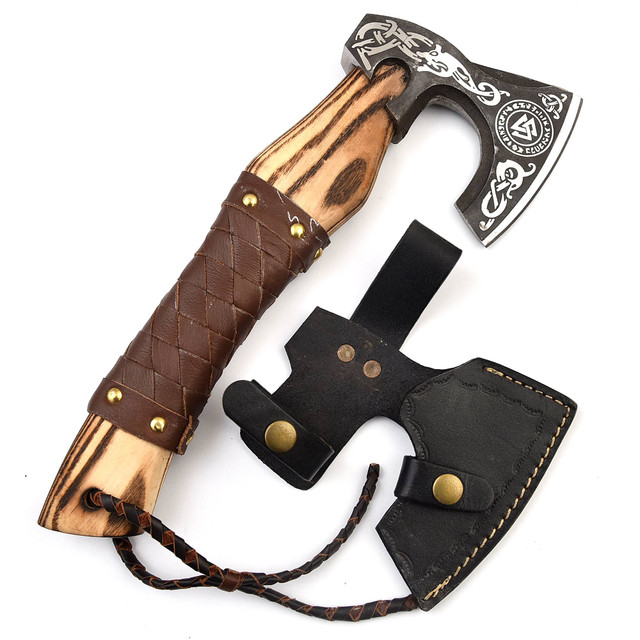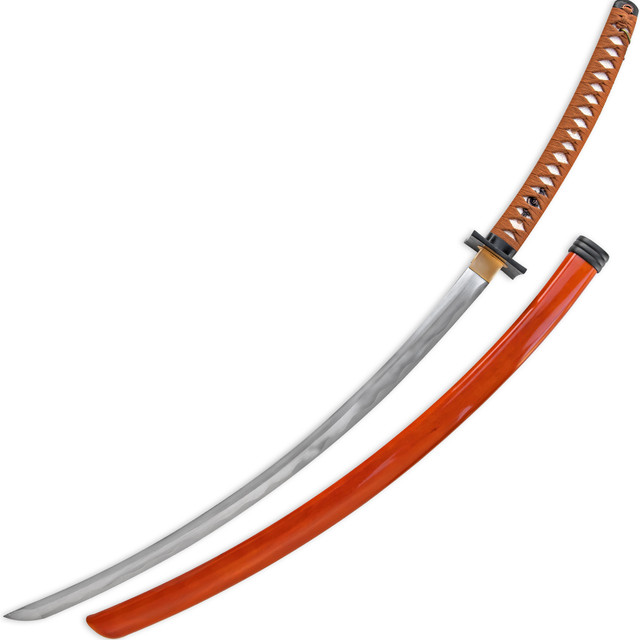Medieval Axe vs. Sword: Which Weapon Dominated the Battlefield?
Posted by SwordsSwords on Aug 19th 2025
The medieval era was a time of fierce battles, where the choice of weapon often determined the outcome of a fight. Among the most iconic weapons of this period were the medieval axe and the sword. Both weapons were revered for their power and effectiveness in combat, yet each had distinct advantages and drawbacks. In this blog, we'll explore the differences between the medieval battle axe and the sword, examining which weapon truly dominated the battlefield.
The Medieval Axe: A Brutal and Effective Weapon
Design and Functionality
The medieval axe was a versatile weapon, valued for its raw power and simplicity. Unlike swords, which required extensive training and skill to wield effectively, the medieval battle axe could be used by almost anyone with basic combat knowledge. The battle axe medieval design was straightforward, featuring a heavy blade attached to a wooden handle, capable of delivering devastating blows that could crush armor and bones alike.
One of the most feared variations of the medieval axe was the medieval war axe. This weapon was specifically designed for battle, with a longer handle for increased leverage and a broader blade for maximum damage. The medieval war axe was particularly effective against armored opponents, as its weight and momentum could penetrate even the most robust armor.

Versatility in Combat
Medieval axes came in various forms, each suited to different combat scenarios. The viking battle axe, for example, was a favorite among Norse warriors. Its lightweight design allowed for quick, powerful strikes, making it ideal for both close combat and raiding. The viking throwing axe was another variant, designed to be hurled at enemies from a distance, adding an element of surprise to Viking assaults.
In terms of sheer destructiveness, the medieval axe was unparalleled. Its ability to deliver crushing blows made it a formidable weapon on the battlefield, especially in the hands of a strong warrior. However, its lack of finesse and precision meant that it was often used in conjunction with other weapons, rather than as a standalone option.
The Axe in Popular Culture
Today, the medieval axe continues to captivate the imagination of history enthusiasts and collectors. Whether it's the imposing medieval battle axe or the agile viking throwing axe, these weapons represent the brutal reality of medieval warfare. For those interested in owning a piece of history, there are plenty of options available, including a variety of medieval axes for sale that cater to both collectors and reenactors.
The Sword: A Symbol of Skill and Nobility
Design and Functionality
The sword has long been considered the quintessential weapon of the medieval warrior. Unlike the medieval axe, which relied on brute strength, the sword required skill, precision, and training. Swords were designed for both cutting and thrusting, making them versatile weapons in combat. They were often lighter and more maneuverable than axes, allowing for swift, controlled strikes.
The design of swords varied widely, from the long, double-edged blades of the European longsword to the curved, single-edged blades of the scimitar. Each type of sword had its advantages, but all shared the common purpose of delivering lethal cuts and thrusts with precision.
The Role of Swords in Medieval Combat
Swords were more than just weapons; they were symbols of status and nobility. Knights and noblemen often carried ornate, cool swords that were as much a display of their rank as their combat prowess. These swords were often passed down through generations, becoming heirlooms that carried the legacy of a family’s martial tradition.
On the battlefield, swords were highly effective in both offensive and defensive roles. They allowed for quick, precise attacks that could exploit weaknesses in an opponent's armor. Additionally, the defensive capabilities of a sword, such as parrying and blocking, made it a well-rounded weapon for one-on-one combat.
The Sword’s Enduring Legacy
Today, swords remain a symbol of honor and bravery, with many collectors and martial artists seeking to own authentic pieces. There are numerous swords for sale that appeal to a wide range of enthusiasts, from historical reenactors to modern-day swordfighters. Whether you're looking for real swords for sale to add to your collection or cool swords to display, the enduring appeal of these weapons is undeniable.

Comparing the Medieval Axe and Sword
When it comes to determining which weapon dominated the battlefield, the answer isn't straightforward. Both the medieval axe and the sword had their strengths and weaknesses, making them effective in different scenarios.
Advantages of the Medieval Axe
- Power: The medieval battle axe was capable of delivering devastating blows that could crush armor and bones, making it highly effective against heavily armored opponents.
- Versatility: Variants like the viking battle axe and viking throwing axe offered different combat options, from close-range fighting to ranged attacks.
- Simplicity: The medieval axe was easy to use, requiring less training than a sword, making it accessible to a broader range of warriors.
Advantages of the Sword
- Precision: Swords allowed for quick, precise strikes, making them ideal for skilled warriors who could exploit an opponent's weaknesses.
- Defensive Capabilities: Swords provided excellent defensive options, such as parrying and blocking, making them well-rounded weapons in combat.
- Status Symbol: Beyond its functionality, the sword was a symbol of nobility and honor, often carried by knights and noblemen as a mark of their status.
Conclusion: Which Weapon Reigned Supreme?
In the end, the choice between a medieval axe and a sword often came down to the individual warrior and the specific circumstances of the battle. For brute strength and raw power, the medieval war axe was unmatched. However, for precision, versatility, and the ability to defend as well as attack, the sword often had the upper hand.
Whether you're drawn to the sheer power of a battle axe medieval or the elegance of a sword, both weapons hold a significant place in history. For those interested in exploring these iconic weapons further, there are many medieval axes for sale and swords to buy that cater to collectors and history enthusiasts alike. Websites like swordsswords.com offer a wide range of options, from cool swords to authentic medieval axe replicas, allowing you to own a piece of history.

